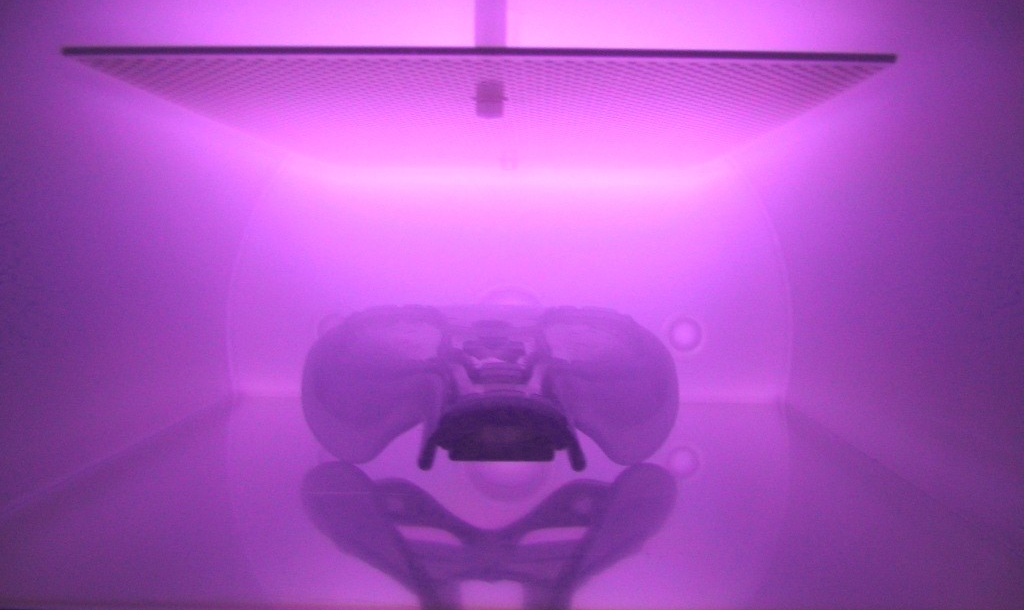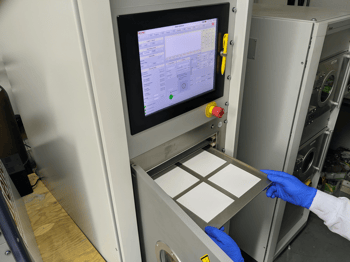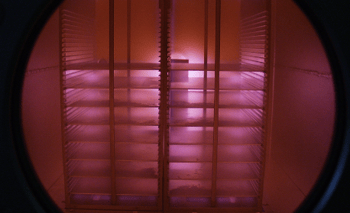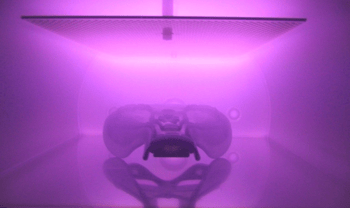Plasma Treatment Articles
Plasma Cleaning
|
3 min read
Topic:

Plasma cleaning in manufacturing can be quite integral in the production of various parts and products. It can be added to a manufacturing process without adding time while improving the performance of bonds, coatings, plating, or other applications versus other methods of surface cleaning or activation. The benefits include no additional time (low takt time), lower cost, and higher bond performance.
Adding a plasma cleaning step into a natural manufacturing process can be done without adding additional manufacturing time or steps. This is accomplished by essentially removing an alternative cleaning step that is inferior. Other cleaning methods can be very wasteful and time-consuming. Plasma cleaning is a very clean and efficient step that improves overall product quality.

Plasma Cleaning Benefits
Plasma cleaning of material in a manufacturing line can improve the performance of the bonds created further down the line. More reliable bond performance is achieved because plasma cleaning will remove any foreign material (FM) accumulating on the base material. If the foreign material is on the part when the bonding step happens, it can inhibit that bond and create adhesion issues. The best way to solve the problem created by foreign material preventing adhesion is to identify the type of foreign material and generate a plasma cleaning process with proper chemistry to remove it. The plasma cleaning process can be easily adjusted to remove many kinds of foreign material typically found in the manufacturing process.
Cleaning with a plasma treatment has the benefit of improving the performance of a coating or plating in manufacturing. This is accomplished because the plasma cleaning process makes adhesion to the base material without contaminant interference. Contaminants often inhibit the plating or bonding in a manufacturing process that can cause fish eyes, bubbling, or other adhesion issues that can cause significant problems. These problems often result in scrap, waste, and lost profits. Plasma cleaning before these bonding and plating process can alleviate many of these issues.

Plasma cleaning is excellent for eliminating volatile organic compounds in the manufacturing process. Volatile organic compounds or VOCs can be generated during chemical cleaning process that involves harmful compounds. These are often expensive and harmful to people that work near them. Plasma cleaning processes eliminate the need for any dangerous compounds that would be generated using a chemical bath. Plasma cleaning is very environmentally friendly, while many methods can use just atmospheric air or oxygen as the process gas.
Implementing a plasma system into a current process can be quite simple. There are many options and customizations to integrate a plasma chamber into an existing line. There are manual plasma cleaning system versions where an operator could load and unload the parts. Fully automated systems are also available where a robot or preprogrammed operation could be automatically cleaned in the production line. These plasma processes ensure a clean, sterile surface for the next manufacturing step. This cleaning approach creates high quality, clean material.
 Did you know that many contaminants on a surface that can negatively impact adhesion are not always visible? They can exist on a surface at a microscopic level. A basic wiping of a surface or a basic cleaning step can leave molecular level contaminants on a surface. Plasma cleaning removes impurities or foreign material from a surface on a microscopic level and ensures a pristine surface for subsequent bonding purposes. Implementing a plasma cleaning after a basic bulk clean can be very beneficial as well. After a bulk clean, the plasma cleaning will remove any leftover traces of microscopic contamination from the basic cleaning process.
Did you know that many contaminants on a surface that can negatively impact adhesion are not always visible? They can exist on a surface at a microscopic level. A basic wiping of a surface or a basic cleaning step can leave molecular level contaminants on a surface. Plasma cleaning removes impurities or foreign material from a surface on a microscopic level and ensures a pristine surface for subsequent bonding purposes. Implementing a plasma cleaning after a basic bulk clean can be very beneficial as well. After a bulk clean, the plasma cleaning will remove any leftover traces of microscopic contamination from the basic cleaning process.
Plasma cleaning has many benefits when used in the manufacturing process. These benefits include no additional time added to the process, short takt time, lower cost, and higher bond performance. There isn't extra time added because a plasma cleaning step typically eliminates another basic cleaning step; additionally, the plasma cleaning process is often quicker. A plasma cleaning process also has a low takt time versus primers or other chemical surface preparation steps because a simple cleaning process can be done in bulk and has short cycle times. The very low running costs can mitigate the startup cost of purchasing a plasma system. The longer you use a plasma system in manufacturing, the lower the overall costs become. Plasma cleaning a surface before bonding or plating will create higher bond performance between the coating and the material's surface and contributes to better overall product quality and positive customer feedback.
To learn more about plasma surface cleaning and its benefits in the manufacturing process, please read our article titled "Plasma Etching and Cleaning Strategy for Better Product Quality."
Comments